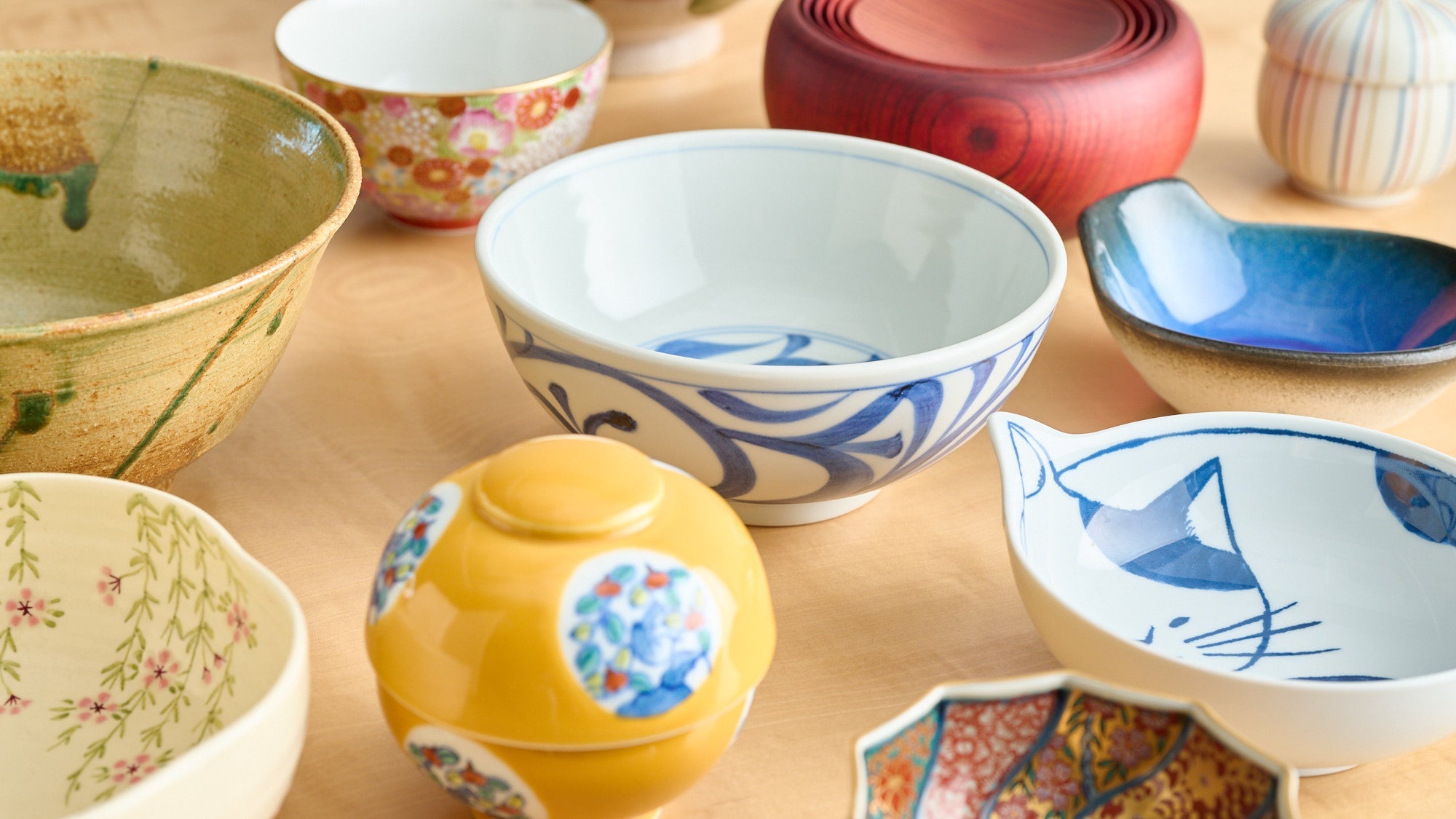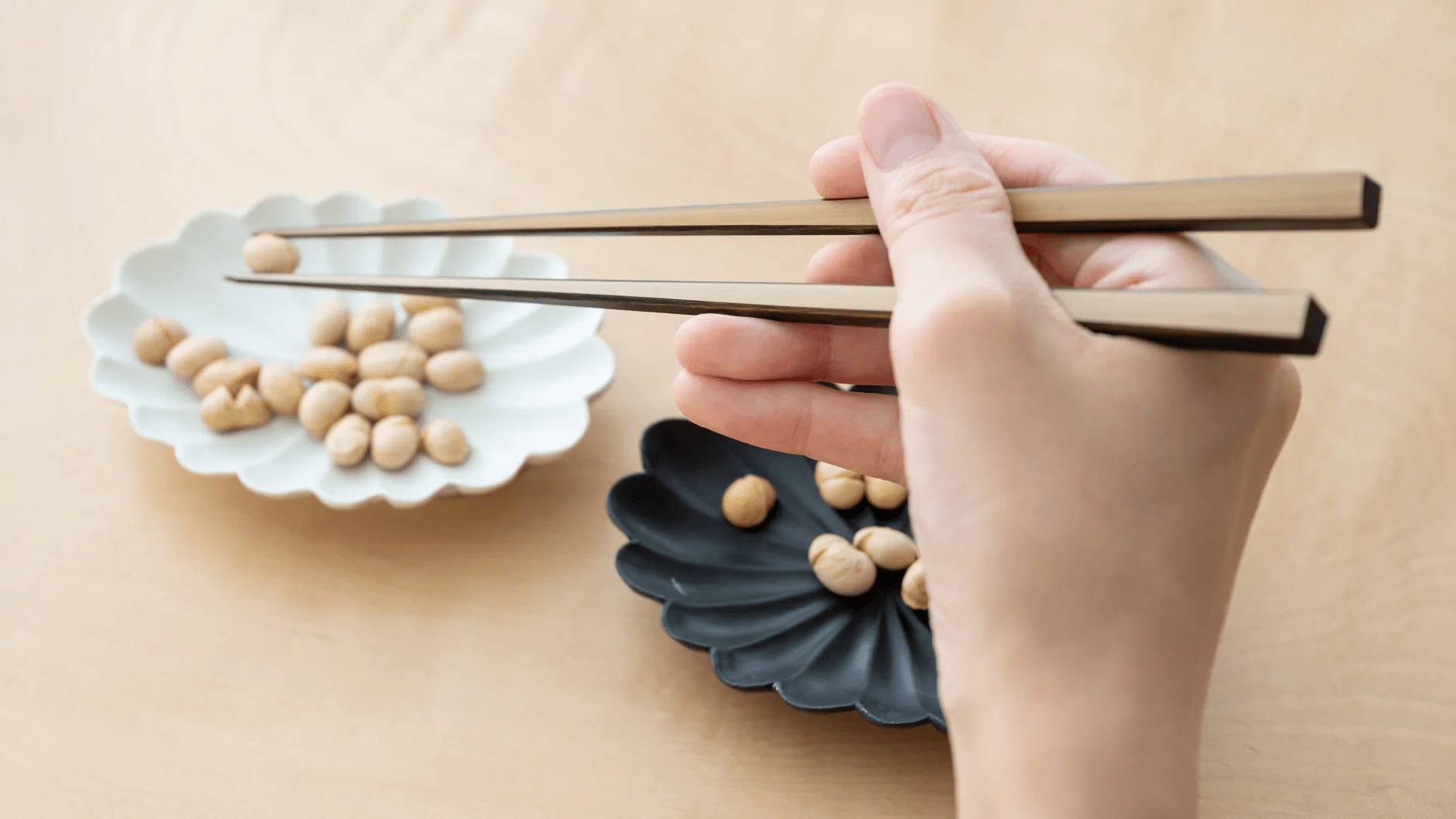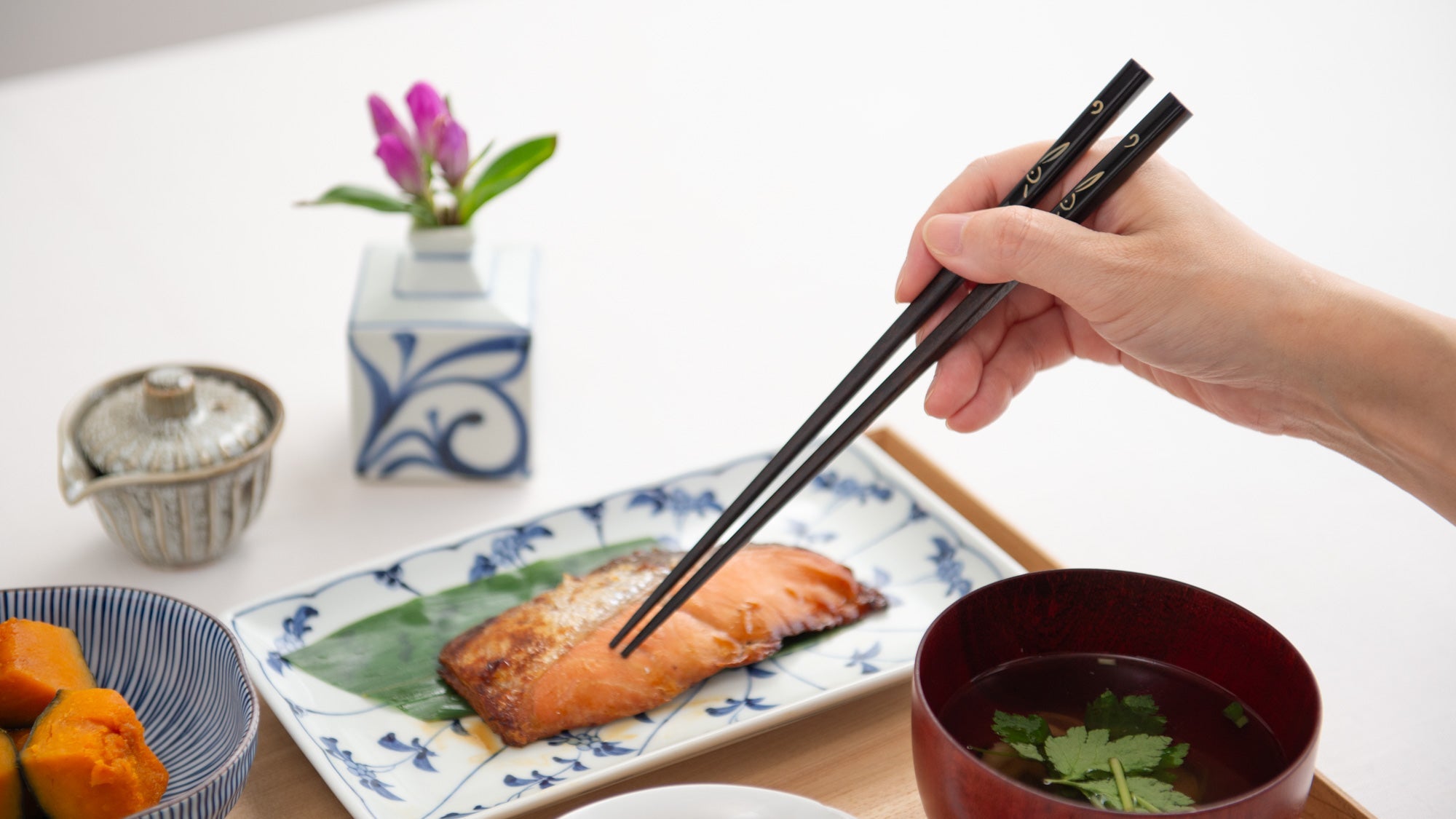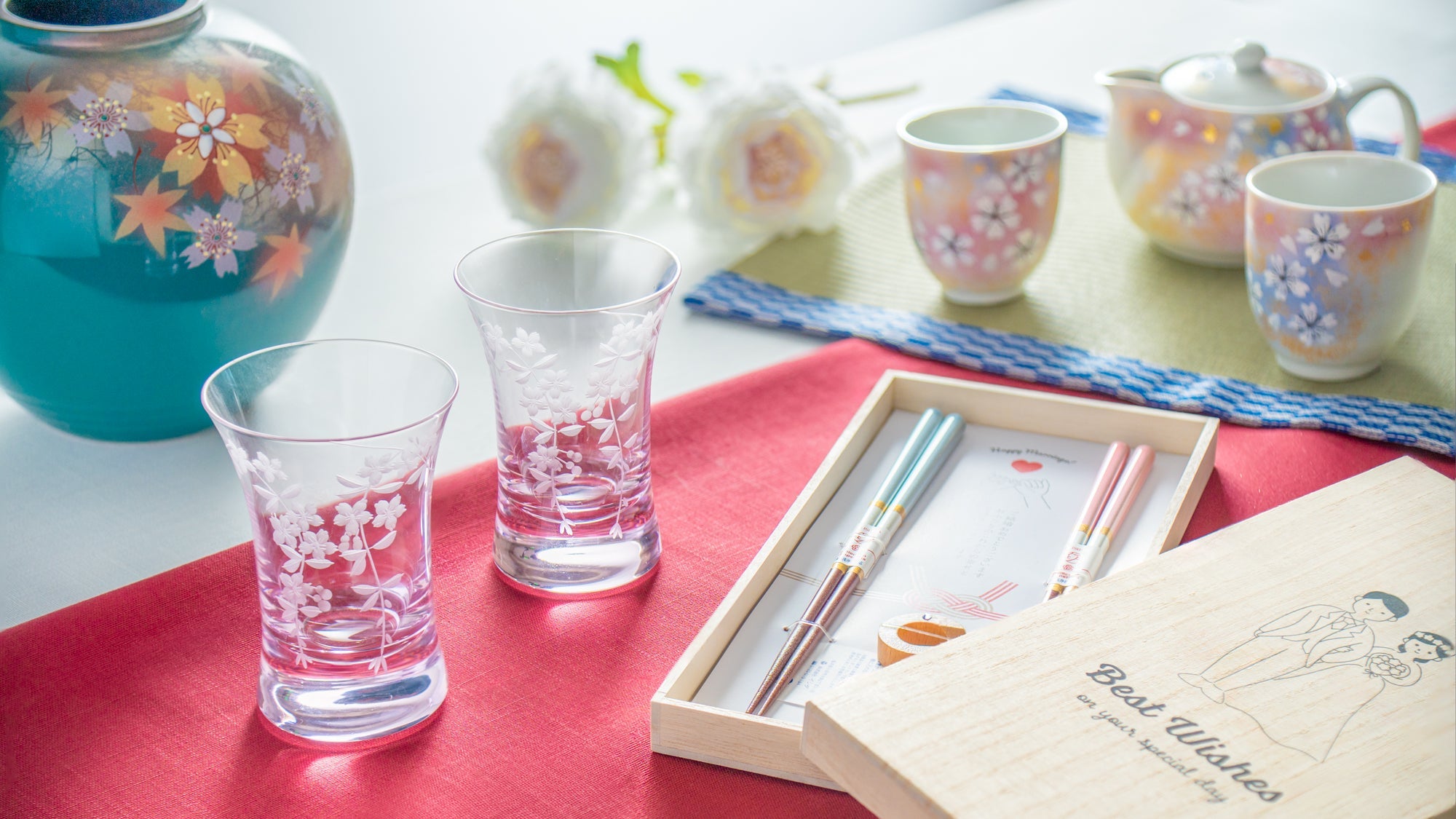
Guide to Japanese Bowls
Written by Team MUSUBI
In the simplest terms, Japanese bowls are a kind of tableware with depth, deeper than plates and often with more gently sloping sides than cups. There are many types of Japanese bowls. Here, we explain the various categories, as well as detail their characteristics and how they are used.
“Bowl” in Japanese doesn’t always translate easily, but that doesn’t mean Japanese bowls are hard to use. They generally are separated into two main categories: wan, also known as o-wan, and hachi. Wan are lifted with one hand as you eat, so they are lightweight. In contrast, hachi aren’t lifted but rather left on the table while eating.
The essential building blocks of a Japanese table are rice bowls and miso soup bowls. These are considered wan-type bowls. Ramen bowls, donburi bowls, and kobachi small bowls, on the other hand, are all classified as hachi.
That said, you don’t have to stick to the traditional classifications. Even in Japan, which bowls are used has evolved over the years. Feel free to use the bowl that best suits your particular needs or tastes.
table of contents
Rice Bowls

What Are Japanese Rice Bowls?
Bowls for serving cooked rice are called chawan, meshi-wan, or gohan-jawan in Japanese. Sometimes this type of bowl gets mixed up with donburi, but they’re actually different categories. The confusion possibly lies in the name. Donburi are large, deep bowls used for serving meals called don or rice bowl dishes. Don consist of a large quantity of toppings over rice. But chawan, the humble Japanese rice bowl, is for holding rice alone.
Rice bowls come in a variety of sizes. We recommend choosing a size based on the amount of rice you prefer in a single portion, as well as what is comfortable to lift in one hand.

For Yourself, or as a Gift
In a Japanese household, each member typically has their own rice bowl and pair of chopsticks—similar to having a favorite mug that’s “yours.” During meals, each family member uses their own rice bowl, chosen according to their favorite size and design. Although everyone shares other tableware like platters and large bowls, rice bowls remain unique to the individual.
Married couples sometimes have matching rice bowls, making a paired set one of our recommended wedding gifts.
Was It Originally a Matcha Bowl?
This question is all in the name—chawan literally translates to “tea bowl”—but the answer is somewhat complicated. Today, the word “chawan” in Japanese can refer to either rice bowls or matcha bowls, the wide tea cups used in tea ceremonies. But that wasn’t always the case. Before the Meiji period (1868–1912 CE), “chawan” only referred to matcha bowls. However, as porcelain matcha bowls became popular in Japanese households, and were increasingly used as rice bowls, the term came to refer to rice bowls as well.
That said, a chawan for rice comes in different shapes and styles than a matcha bowl. Today, chawan for the tea ceremony are sometimes called matcha-wan to distinguish them from rice bowls.
Soup Bowls

What Are Japanese Soup Bowls?
The Japanese soup bowl, or shiru-wan, is about the same size as a rice bowl and is used to serve various types of miso soup or suimono, a dashi broth soup in Japanese cuisine sometimes referred to in English as Japanese clear soup.
Japanese soup bowls fall into the category of wan, as they are lifted by one hand. Instead of using a spoon, diners typically use chopsticks to pick up the soup’s vegetables, tofu, or other solid ingredients, and drink the broth directly from the rim of the bowl. To prevent excessive heat transfer to the hand, Japanese soup bowls are usually made of lacquer-coated wood, which has low thermal conductivity.
We recommend choosing a size that you can pick up comfortably in one hand. Having a soup bowl about the same size as your rice bowl can also be a way to lend a sense of unity to a table setting.
Soup Bowls with Lids

Japanese soup bowls are designed with or without lids. Those with lids are often used for special meals where people gather, such as New Year's parties or celebrations with guests. The lid keeps the soup from getting cold, keeping it warm until everyone at the table is ready to eat.
Soup Bowls for Kids

Soup bowls for children come in smaller sizes. Many are made of plastic, but traditional wooden lacquerware soup bowls are still available.
Wood has low thermal conductivity, so even children can safely hold wooden bowls. Additionally, exposure to traditional crafts can foster cultural appreciation and aesthetic sense. The children’s soup bowls in our collection are designed for stability, featuring wide bases to make them more spill-proof.
Kobachi Small Bowls

What Are Kobachi Small Bowls?
The Japanese word kobachi comes from ko, small, and hachi, bowl; so it literally means “small bowl.” Kobachi small bowls are used to serve appetizers or side dishes for one person. Several types of food and appetizers arranged in a kobachi make the table look vibrant and elegant.
Kobachi bowls used for decorative slices of sashimi, especially in kaiseki cuisine, are often called mukozuke.

Festive Combinations
When preparing a special Japanese meal for New Year's, hanami cherry blossom viewing parties, or any gathering of guests, the combination of a jubako bento box or bamboo basket and several appetizers in small kobachi bowls can create a sophisticated and gorgeous spread.
Kobachi are fun items with a wide variety of patterns and materials. View our collection to find your favorites and assemble a creative table with your own individual style.
Standard Size
Kobachi small bowls in our collection have a diameter under 12.9 cm (5.1 in). If you prefer something larger, we recommend our category Medium Bowls.
Medium Bowls

What Are Japanese Medium Bowls?
The medium bowls in our collection correspond to the Japanese category chubachi, which literally means “medium bowls” (How convenient!). Medium bowls are larger than kobachi small bowls, but shallower than donburi, making them suitable for an individual serving of nimono, stewed dishes. They are quite a versatile type of bowl, suitable also as serving bowls or children’s bowls. When compared to Western tableware, a Japanese medium bowl would be about equivalent in size and depth to your typical cereal bowl.
Standard Size
Japanese medium bowls in our collection have diameters from 13–20.9 cm (5.1–8.2 in). They are small enough to fit in the palm of an outstretched hand.
Large Bowls

What Are Japanese Large Bowls?
The large bowls in our collection correspond to the Japanese tableware category obachi, literally “large bowls.” Japanese large bowls make ideal serving bowls. They are the perfect vessel to place in the center of the table for everyone to share.
They can be used not only for stew, but also for salad and pasta. A great canvas for plating sashimi, these bowls beautifully showcase decorative garnishes like shredded daikon radish. This versatility makes them just as convenient as the bowls in our Medium Bowl collection.
If likened to Western tableware, we would consider a large Japanese bowl to be about equivalent to a salad bowl.
Standard Size
The large bowls in our collection have diameters over 21 cm (8.3 in).
Donburi Bowls

What Are Donburi Bowls?
Donburi bowls, in use since Japan's Edo period (1603–1868 CE), are thicker and deeper, typically one or two sizes larger than a rice bowl. Donburi dishes are also called don, often translated in English to “rice bowls” or “rice bowl dishes.” (Alas, the vagaries of translation!) Donburi come in many varieties, such as oyakodon, chicken and egg over rice; and katsudon, stewed pork cutlet over rice.
In addition to rice dishes, a donburi can also be used to serve noodles such as soba and udon. Donburi are a must-have piece of Japanese tableware for anyone who wants to easily enjoy Japanese food at home.
Lids and Their Functions

Some donburi bowls come with matching lids. Serving a don rice bowl meal in a lidded donburi not only keeps the food warm, but also allows the toppings to steam up within the bowl, making the rice more fluffy and delicious in the short time between plating the dish and digging in.
Plus, it’s simply a fun experience to open the lid and reveal what’s inside. This extra feeling of specialness and hospitality makes lidded donburi a great option when entertaining guests.
Sizing
The bowls in our donburi collection fall into three different size categories: small (S), medium (M), and large (L). Feel free to play around with sizing to find what works best for you. If you often eat ramen or other noodle dishes, for example, we recommend choosing a bowl with a wide diameter, whereas if donburi rice dishes are your go-to, a bowl with more depth should do nicely.
Ramen Bowls

What Are Ramen Bowls?
Ramen bowls are, as the name suggests, bowls for serving ramen. Since ramen as a dish is characterized by having both noodles and soup along with various toppings such as eggs, roasted pork, pickled bamboo shoots, and sheets of nori, the ramen bowl is larger than the donburi bowl and is characterized by its wider rim.
Since ramen is of Chinese origin, ramen bowls made in Japan are sometimes decorated with Chinese-style designs.
Sizing
Wider diameters tend to be favored for ramen and other noodle dishes, but don’t hesitate to explore our collection to find what will work well for you. Our ramen bowls are sorted into small (S) and medium (M) sizes, helping you to match your bowl to your appetite!
Tonsui Bowls

What Are Tonsui Bowls?
A tonsui bowl is a small bowl characterized by a raised portion of the rim that acts as a handle. Tonsui bowls are mainly used as serving dishes when eating nabe hot pot, or used for dipping sauces with menus like tempura.
To hold a tonsui, pinch the handle between your thumb and forefinger and place your remaining fingers along the side of the bowl for support.
Chawanmushi Bowls

What Are Chawanmushi Bowls?
Chawanmushi is a savory, steamed egg custard made with a base of dashi. A chawanmushi bowl is a special cup-like vessel with a lid designed for both cooking and serving this unique traditional dish.
Chawanmushi bowls are similar in design to Japanese soup bowls, but as they are placed directly into hot steamers for cooking, they are made of heat-resistant porcelain rather than wood or lacquerware.
Despite the name, you don’t need to be an egg custard fan to enjoy chawanmushi bowls. These cute little cups are also a nice way to present desserts like Western-style sweet pudding, or small servings of soup.
Soba Choko Cups

What Are Soba Choko Cups?
Soba choko cups have long been used in Japan to hold the dipping sauce for cold soba noodles, but they are also loved as all-purpose cups because they are just the right size for other foods. Because of their practical size—not too big, not too small—soba choko cups are often chosen as gifts, and some collectors even specialize in soba choko. They are partially characterized by their simple shape of straightly slanting sides, and hold a similar volume as yunomi teacups.

One of the Most Versatile Items of Japanese Tableware
Soba choko cups are not just for soba dipping sauce; they can also be used as teacups, coffee cups, or whiskey or sake cups. Besides holding sauces and beverages, they also make great dessert cups and some can even double as chawanmushi bowls—earning them their place in this bowls guide. Having a few around is convenient for entertaining guests. They come in a wide variety of patterns, making them a fun and easy way to liven up your table.
Oryoki Bowl Sets

What Are Oryoki Bowls?
Oryoki bowls have originated as the personal serving and eating utensils used by practitioners of Zen Buddhism.
They are a type of nesting bowls: starting with the largest bowl on the outside, each successively smaller bowl is stacked one inside the other in order to allow for compact storage and carrying. This functional tableware was designed to minimize waste in daily life—a goal just as relevant as ever.
Learn more about these unique bowls with our guide, here.
Japanese bowls are as versatile as they are beautiful, offering endless possibilities for both everyday dining and special occasions. Whether you're looking to enjoy a traditional Japanese meal or simply add a new piece of Japanese tableware to your collection, our curated selection of bowls offers something for everyone. Explore our range and discover the perfect one for your needs.








2 comments
@Dottie Thank you for your inquiry! Our Musubi Lab Concierge Team will be in touch with you shortly regarding “bowls to use for Poke bowl foods.” Please ask them lots of questions if you need to! Sincerely.
Team Musubi
bowls to use for Poke bowl foods?
Dottie
Leave a comment
This site is protected by hCaptcha and the hCaptcha Privacy Policy and Terms of Service apply.